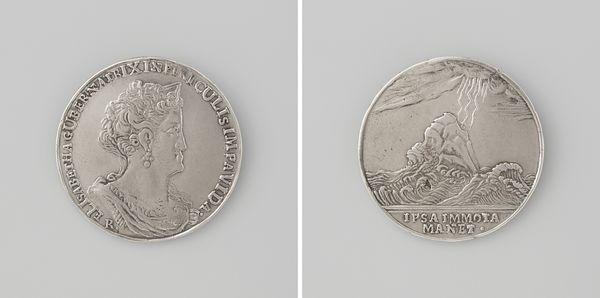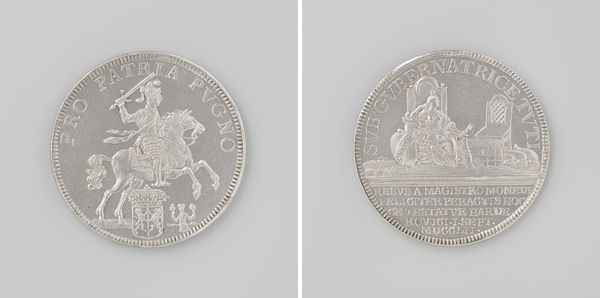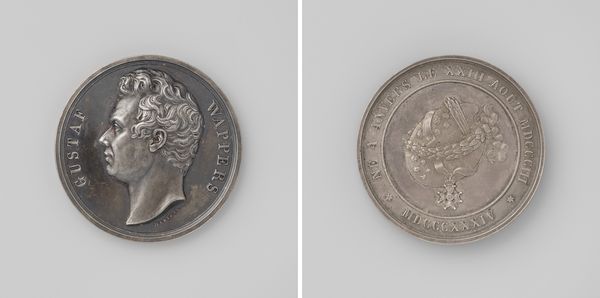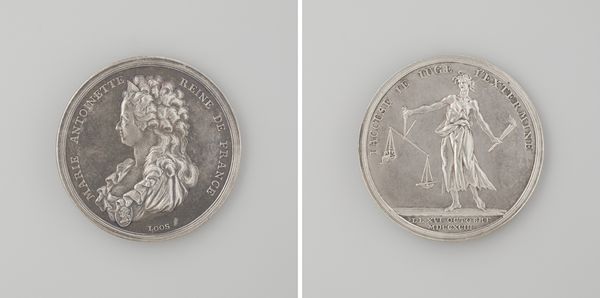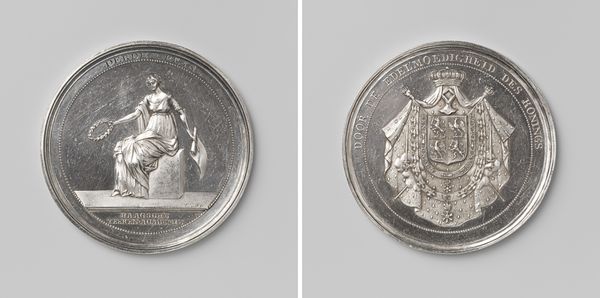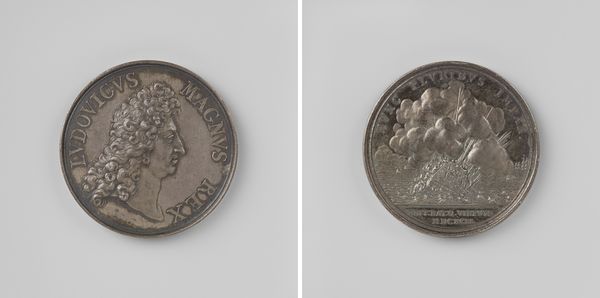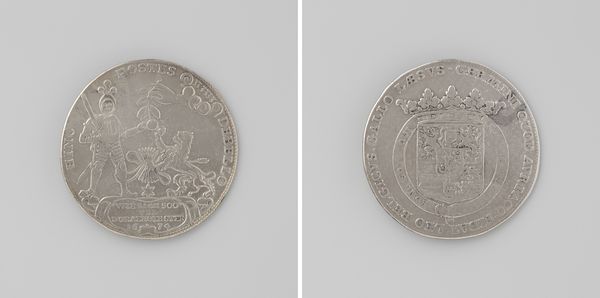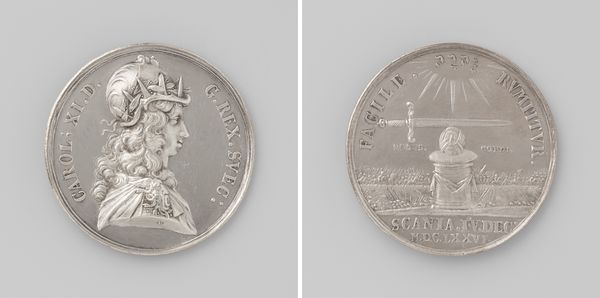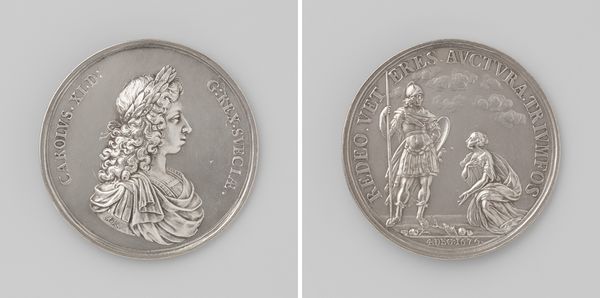
Vijftigjarig huwelijk van J.A.G. de Vos van Steenwijk en A.M.F. van Aerssen Beyeren 1903 1903
0:00
0:00
metal, relief, sculpture
#
portrait
#
metal
#
relief
#
sculpture
#
history-painting
Dimensions: diameter 6.0 cm, weight 111.61 gr
Copyright: Rijks Museum: Open Domain
Curator: Here we have a metal relief sculpture commemorating the golden wedding anniversary of J.A.G. de Vos van Steenwijk and A.M.F. van Aerssen Beyeren in 1903. It was crafted by Godefroid Devreese. Editor: It's surprisingly austere, isn’t it? Especially considering it celebrates such a significant milestone. The silvery metal almost mutes the celebratory aspect. Curator: Precisely. This wasn’t simply a family memento. Medals like these spoke volumes about status and power, reflecting the gendered and raced norms of that era. Editor: The choice of metal speaks to that. This isn't some fragile, precious material but a durable, manufactured substance, emphasizing permanence and perhaps, the couple's societal standing. Was Devreese a well-regarded metal worker? The means of producing this kind of relief seem complex, almost industrial. Curator: He was indeed, showcasing how craft became entwined with burgeoning industrial techniques at the turn of the century. The front displays the couple, while the reverse shows their combined coat of arms – clear visual markers of lineage and legacy. Consider the role of women during this period, particularly in aristocratic marriages; their role in continuing bloodlines and upholding social positions was paramount. Editor: Yes, it seems designed to communicate a family enterprise more than romantic love. The dates etched beneath their profiles underscore duration and continuation, echoing the labor of maintaining these power structures through time and across generations. Curator: We need to acknowledge that representations such as these functioned within networks of privilege. Understanding that lineage intersects with political power helps us dissect its multifaceted, weighted meanings beyond sentimentality. Editor: Examining its manufacture lets us explore this through the materials involved, not merely the image portrayed. Perhaps tracing the source of this metal would give greater insight. It offers an interesting glimpse into both the aesthetics and the labor of the late 19th and early 20th centuries. Curator: Definitely. Let’s appreciate that objects like these have layers upon layers embedded within them—histories of class, gender, labor, and power—waiting to be revealed with a close study. Editor: I'm struck at the value of exploring the networks of materials and labour behind them, not just in analyzing them. It encourages new approaches in contemporary craft practices.
Comments
No comments
Be the first to comment and join the conversation on the ultimate creative platform.

